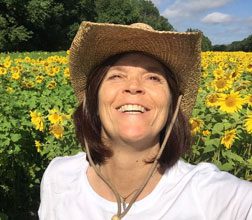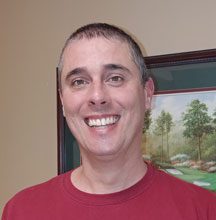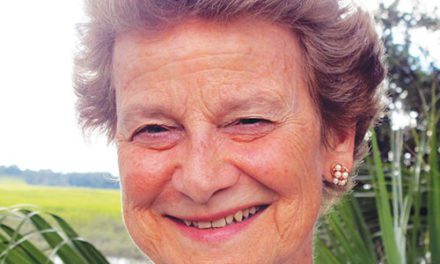 First, let me say I welcome and appreciate the opportunity to be a guest writer for Wholly Holistics. While Katherine and Sutty have me pondering a variety of ideas, I will be focusing on one “simple” concept, that of reflexology.
First, let me say I welcome and appreciate the opportunity to be a guest writer for Wholly Holistics. While Katherine and Sutty have me pondering a variety of ideas, I will be focusing on one “simple” concept, that of reflexology.
As an energy worker since the early part of this century, I have chosen this enigmatic, (to continue on Sutty’s theme from his last installment) complementary or alternative, non-invasive, holistic practice because I fully believe in its ability to restore or improve a person’s health. Reflexology uses the feet and hands to promote harmony and well-being in the person, yet the goals of reflexology usually have nothing to do with the feet and hands themselves. Rather, the purpose is to either improve the function of a specific body part or promote overall health through the reflexes found in these three appendages that correspond to systems and parts of the body. So, you may ask, how is this accomplished and why isn’t everyone into it?
Let’s start with a bit of history. Reflexology is an ancient art and a “new” science. Evidence of reflexology was found in petroglyphs in Egyptian tombs as far back as 2320-2540 B.C. As people had different survival skills and ways of knowing thousands of years ago, I surmise what was known and practiced as reflexology was less enigmatic and esoteric than it is today. Certified Reflexologists are working to change that. With the technological advances, and general evolution over 4000 years, people expect a more scientific explanation than “because I know it works.” Although today, people come to reflexology as a last resort, for their pain.
In modern day, reflexology is a “new” science, in that studies have been small in number and small in subject groups to explain and verify its benefits. This is why doctors have been slow to embrace reflexology as a complementary therapy. In 2005, The National Institute of Health granted $2.65 million to Michigan State University for a five year study focusing on pain relief in 385 breast cancer patients. In a nutshell, findings have shown that reflexology, used in conjunction with standard medical care, is beneficial to the patient, allowing improvement in physical function and a better quality of life after chemotherapy. Not one patient experienced any negative reactions to the reflexology protocol. A second grant was awarded in 2011 for a second study, and a third study will be completed in 2020. As cited in the Michigan State University School of Nursing website, these studies have expanded the validity and credibility of reflexology as a therapy able to reduce symptoms and enhance physical functioning for cancer patients.
On a most basic level, we are all balls of energy in the form of a body. So let’s turn to the art of reflexology. Our bodies are always trying to achieve or maintain homeostasis. When the body is in equilibrium, optimal health is achieved. When the body is out of balance, we experience sickness or injury and our energy gets blocked in the body part that is the source of imbalance, resulting in pain, and if ignored long enough, compensating discomfort. Areas of the body that suffer from inflammation or pain will be sensitive when pressed in the corresponding reflex points in the feet and hands. The ancient art of reflexology is formed in the thumbs, fingers, and hands of the practitioner. A good practitioner will find the blocked energy, break it down through different techniques, and send it through the circulatory system. This allows the energy to flow more freely and the body part to work more efficiently, thus, allowing nutrients and oxygen to reach all cells of the body, bringing the body back to homeostasis.
So what can you expect during a reflexology session? Picture yourself in a smaller room leaning back in a comfortable, reclined chair. Your feet are exposed and sitting on top of a cushy pillow. The room is slightly illuminated, the temperature is a comfortable, snug number, and native flute music is resonating through the air. Think of the word “hygge” (my favorite Danish word and concept meaning cozy, contentment and well-being) and put yourself there. Your foot is in the hands of a professional, warming it up to allow for more flexibility and increased circulation. A protocol follows that works all reflex points of the feet and hands checking for blocked energy, and at the same time, releasing muscular tension to bring about a state of complete calmness. The chair is carrying your weight, as if you are a ball of clay. You may want to close your eyes and just be, or you may want to ask questions, whatever allows you to be open to the experience. If blocked energy is felt, the practitioner will ask about your history of that body part, as your feet carry the history of your body. There may have been a childhood injury that has since healed or maybe it is a seasonal response to outside influences or a stressful lifestyle that is making an impact. That specific area will be given extra attention. Because all the systems of the body are connected, an entire body session will be administered first, as the smallest imbalance in one area can affect many more areas. Hands are then reflexed in the same manner. Your session may conclude with you taking several deep and slow breathes, or you may slowly allow yourself to come back to the present before rising out of the chair. Expect a deeper and more restful sleep and an extended level of energy within the next twenty-four hours.
From complicated maladies, to the imbalances of living, to the desire of maintaining a relaxed state of mind, body, and spirit; reflexology itself has been, for over four thousand years, a holistic approach to achieve overall harmony and well-being. It is something I recommend to everyone, to you, even if only to feel homeostasis and to recognize when it is achieved.
Southern California native Barb Bausch has been a Certified Reflexologist since 2011. She currently practices at the Just Be Centre in Bluffton and also operates a mobile unit for sessions. Having lived in many places on both coasts while coaching college basketball for a near quarter century, she gave it all up to pursue her many other interests, including energy work and writing. She continues to work with youth through the International Junior Golf Academy. Barb now lives in the Lowcountry, intentionally, to be inspired by nature, wildlife and its wonderfully eclectic people. bausch23@gmail.com or 843-816-4624







